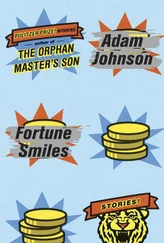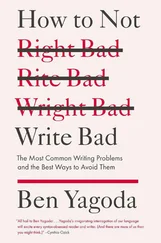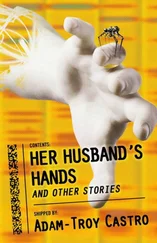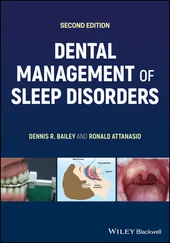The two brothers, one now filled with guilt and one with resentment, soon stopped speaking to each other, but Siegel’s Shoes survived.
Thirty years later, with a fruitful physics career at its apex, having produced two interesting though ultimately untestable ideas about the tiniest of entities, and one interesting untestable idea about an enormous entity, plus a poetic book about the nature of time (cyclical/illusory), the younger Siegel brother, standing at a chalkboard in Oslo, where he had been invited to give an illustrious lecture, suddenly had the distinct, totally disorienting, and, as he later described it, utterly terrifying impression that he was holding not a piece of chalk but a gentleman’s foot.
He dropped the chalk, lurched backward. Three Norwegians rushed to his aide.
“I’m fine!” he cried, holding them at bay with his palms. “Really, I’m fine.”
He cracked his knuckles and picked up the chalk, accompanied by the horrible sensation that he had merely cracked his knuckles and picked up the foot, and as he brought the chalk to the board to finish writing an equation he perceived with a violent clarity that he was, in reality, slipping the gentleman’s foot into an elegant loafer. How, he thought, feeling at his back the compassionate glare of the concerned Scandinavians, do they feel, he thought, letting the chalk slip from his fingertips as he ran from the auditorium.
He did his best to forget the episode. He blamed fatigue or dehydration. But in three later lectures back at the University of Chicago he felt the distinct sensation, three times at the same chalkboard, that he was in actuality slipping three gentlemen’s feet into three elegant loafers and asking them to take a little walk around.
Either, thought Leonard, this is a psychological breakdown, in which my suppressed guilt over my older brother’s life is now making itself felt in an increasingly intrusive fashion, or it’s a physical breakdown, in which the parallel universe where I became the shoe salesman and he the physicist is flickering into the one where I became the physicist and he the shoe salesman. (Flickering multiverses, as it happens, was one of those untestable ideas on which he’d made his name. They also played an important role in his popular poetical time book.)
The obvious thing to do was to call his older brother and ask him, point-blank, whether he had ever had the sensation, while slipping a gentleman’s foot into a loafer, that he was in reality writing an equation on a chalkboard. “Yes” would mean physical breakdown, “no” would mean psychological breakdown. But after some thirty years of basically no relationship it was hard to ask your brother anything , much less a question directed at precisely the thing he was most sensitive and aggrieved about, i.e., that he’d spent his entire life handling men’s feet rather than fundamental equations, leaving you free, as far as your father was concerned, to work with equations not feet.
So instead of asking, he drove up from campus one day and stealthily pressed his forehead to the chilly windowpane of Siegel’s Shoes, with the idea of inferring from the behavior of his brother — who was at that moment crouched attentively in the crotch of a flushed fat man in suspenders, brandishing a brown loafer into which (he seemed now to be explaining the logistics of it to the suspendered fat man) he was proposing to stuff the latter’s vast left foot — whether he sometimes flickered, the moment he put a shoe onto a foot, into the parallel universe in which he was a physicist explaining at a chalkboard the fundamental nature of reality.
The fat man proffered his foot. His brother brought the loafer toward it at an angle. Leonard held his breath. His older brother did not appear to be flickering between all conceivable universes. The suspendered fat man’s toes breached some invisible plane within the loafer, prompting his brother to expertly reduce the angle in order to glide the gentleman’s foot in further, and… there.
There!
There it was.
He had expected something subtle, but this was impossible to miss, this combination of physical signs indicating that his brother had instantly flickered into, and back from, an alternative but equally feasible universe in which he stood at a chalkboard, writing a set of equations that together characterized the motion of a certain particle. The customer noticed nothing — he looked down and his enormous foot was elegantly shod — but in that instant his salesman had flickered (at approximately the speed of light) between two of the probabilistically possible universes Barry Siegel had unwittingly brought forth in 1970, and which, Leonard reasoned logically at the windowpane, family members are always unwittingly bringing forth in their interactions with one another. Of course the greatest source of parallel universes, numerically speaking, Leonard reasoned, are fathers who attempt to dictate their sons’ careers, thereby instantly bringing forth the universe in which their sons obey their career choice and the universe in which their sons disobey, as well as the infinite array of universes in which their sons are probabilistically smeared between obeying and disobeying; but fathers are not the only world creators; in fact, any interaction between family members brings forth at least one, and usually more than one, universe, especially an interaction that carries with it a demand; and a corollary he could deduce from this before even removing his forehead from the windowpane was that bigger families, as well as more interactive families, bring forth more universes, and big interactive families who make lots of demands on one another bring forth the most universes, numerically. (He was not saying anything about the quality of these universes.) In terms of the physics it was not necessarily wrong to call any conversation with a loved one a universe-splitting juncture or nodal point, and one’s willingness to enter into such a conversation should depend solely on one’s willingness to be smeared probabilistically between all possible outcomes.
Leonard wrote up the paper in a single sitting, working out in a sort of frenzy, but with the utmost mathematical rigor, the worlds Barry Siegel had brought into being in 1970 with his almost inhuman shoe store obstinacy. There was the world in which Leonard did fundamental physics and Neil sold men’s shoes, the world in which Neil did fundamental physics and Leonard sold men’s shoes, the world in which both did physics, the world in which both sold shoes, and the infinite array of worlds in which Leonard and Neil were each probabilistically smeared between doing theoretical physics and selling men’s shoes.
Observing, by the paper’s own logic, that in half of these feasible universes it was Neil and not Leonard who authored it, Leonard put down his brother as his coauthor and sent it to him at Siegel’s Shoes for his perusal. Amazingly, his older brother’s pride (Neil responded in a terse little note that he had “never once envied you or regretted my decision to take over Dad’s store,” and demanded that his name be removed from “your unbelievably condescending article”) blinded him— whether or not he agreed with Leonard’s mathematical analysis of it —to the undeniable phenomenological fact that the Siegel brothers were perpetually flickering back and forth in their professional lives, both at times scientists, both at times proprietors of Siegel’s Shoes, which stands to this day in each and every one of these possible worlds at the corner of Monroe Street and State, and is now the oldest continuously operating shoe store in Chicago.
…………………….
A son who moved back into his childhood home as an adult has become unhinged by his father’s audible breathing, which is impeding the son’s literary-philosophical writings. The father’s nose or sinuses must have changed over the years, according to the son, who in childhood never heard air rustling into or out of his father’s nose. He has persuaded his father to see an otolaryngologist.
Читать дальше












